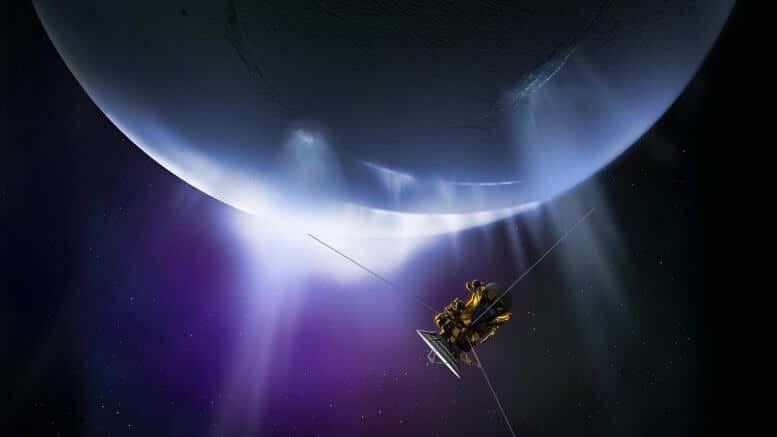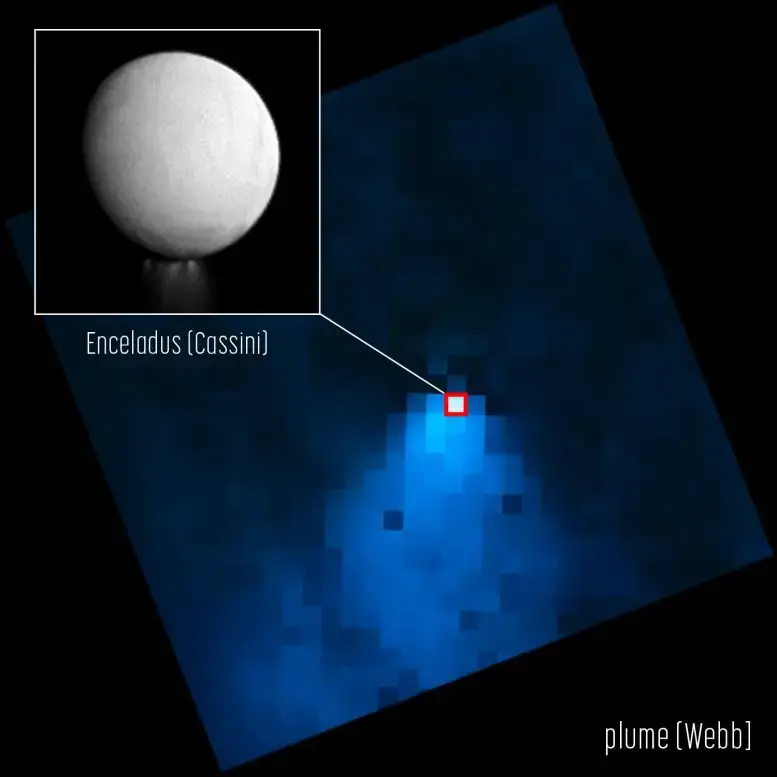This is the first time that such an emission of water has been seen from such a great distance, and in addition, the web allows researchers a direct view, for the first time, of how this emission feeds the water supply of the entire system of Saturn and its rings

Enceladus - a small icy moon of Saturn - is one of the most intriguing objects in the search for signs of extraterrestrial life.
Beneath the crust of ice is a global ocean of salt water. Jets, fed by this ocean, erupt from the moon's surface and enter the entire system of Saturn. The James Webb Space Telescope's first look at this long-awaited ocean world is already revealing incredible new details about the moon—including a plume of water vapor that bursts more than twenty times the size of the moon itself.

A water vapor plume from Saturn's moon Enceladus that is about 10,000 km long - almost the distance between Los Angeles, California and Buenos Aires, Argentina - has been detected by researchers using the Webb Space Telescope. This is the first time that such a water emission has been seen from such a great distance, and in addition, Web allows researchers a direct view, for the first time, of how this emission feeds the water supply of the entire system of Saturn and its rings.
Enceladus, an ocean world that is about four percent the size of Earth and only about 500 km in diameter, is one of the most exciting scientific targets in our solar system in the search for life beyond Earth. Squeezed between the moon's outer icy crust and its rocky core is a global reservoir of salty water. Geyser-like volcanoes spew jets of ice particles, water vapor, and organic chemicals through fissures in the moon's face informally called "tiger stripes."
In the past, observations have mapped jets hundreds of kilometers from the moon's surface, but Webb's superior sensitivity reveals a new story.
This animation shows how the moon's water plumes feed the planet's ring. From an analysis of the data from the Web, astronomers determined that approximately 30% of the water remains inside this ring, and the rest escapes and supplies water to the rest of Saturn's system.
"When I looked at the data for the first time I thought I must be wrong. It was a shock to discover a water plume more than 20 times the size of the moon," said lead author Jeronimo Villanueva of NASA's Goddard Space Flight Center. "The water plume extends far beyond its emission zone at the South Pole."
The length of the timara was not the only characteristic that interested the researchers. Also the rate of effect of the water vapor, about 300 liters per second, is particularly impressive. At this rate, you can fill an Olympic pool in a few hours. By comparison, doing this using a garden hose on Earth would take more than two weeks.
More of the topic in Hayadan:

5 תגובות
What is the problem with taking a large amount of water in a spaceship and transporting it? Look at Tana Debi Eliyahu who explains in Aramaic that there is no other place besides life on earth and also how many are your works O Lord
Very Cool
The diameter of this moon is only about five hundred km, so the length of the jet emitted from it is maybe 10 km, certainly not 10000.
Geronimo C. L. - Geronimo, - salt water? According to physics, water does not carry salt into the air. So what did we have?
How many are your deeds,